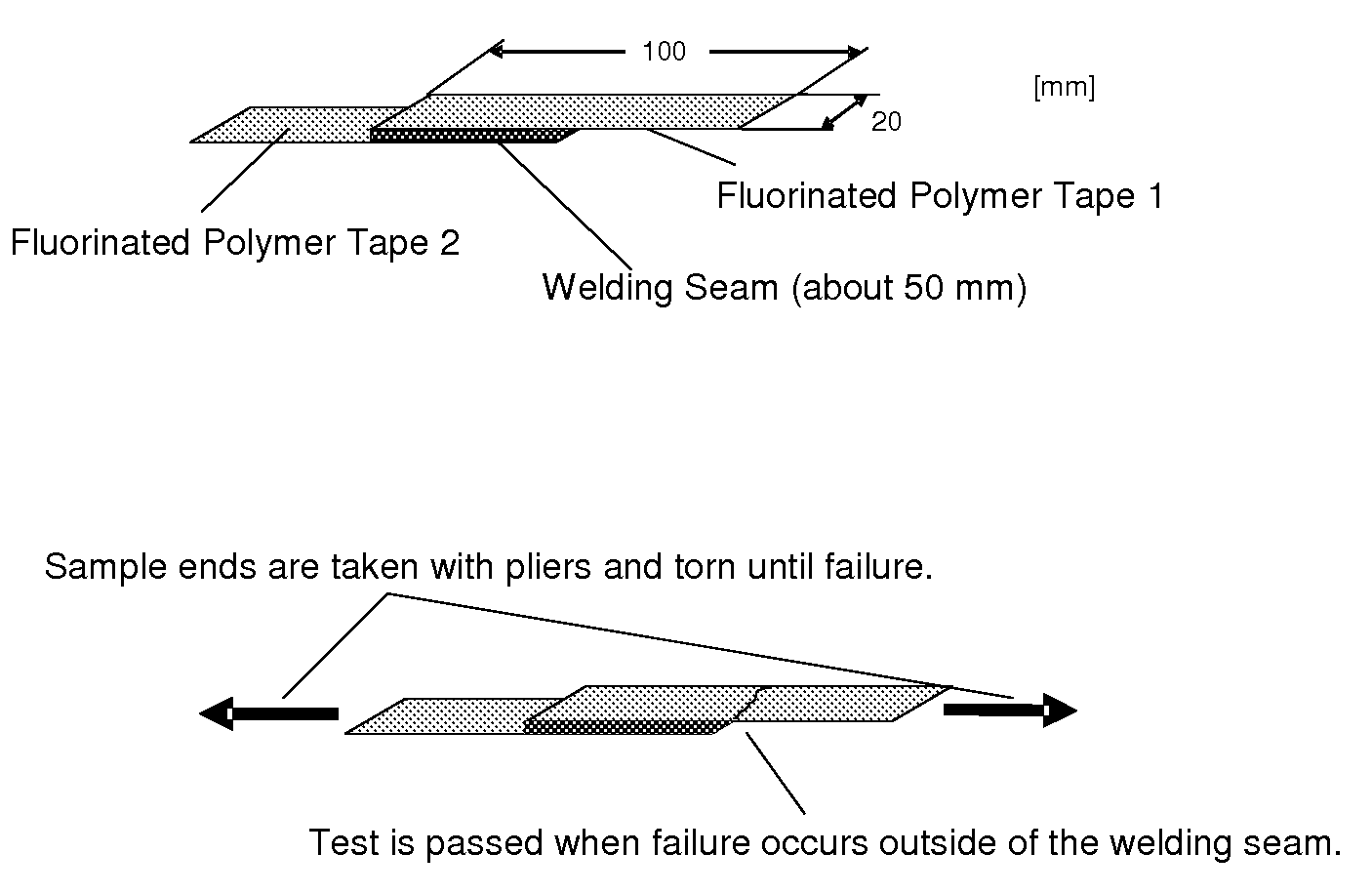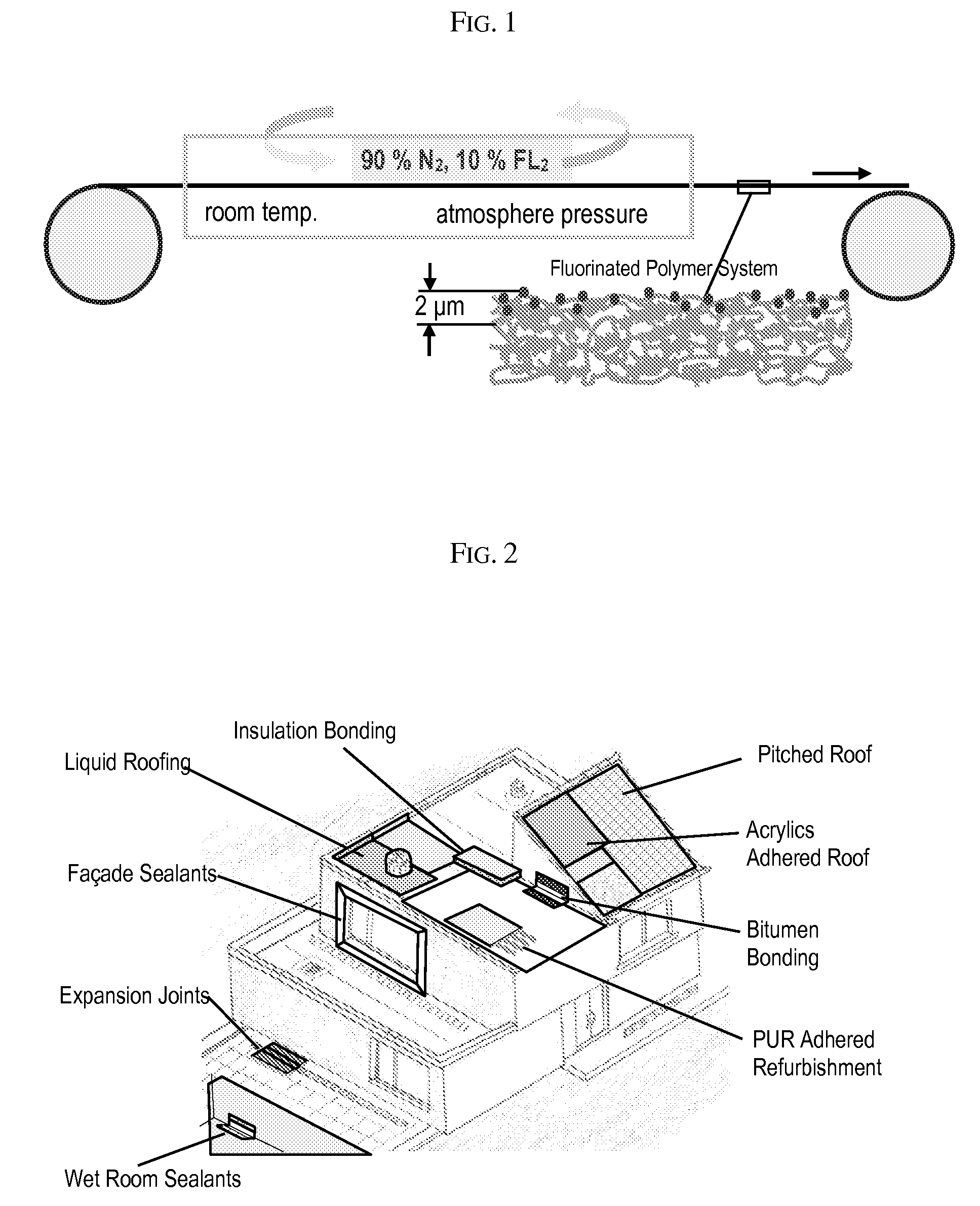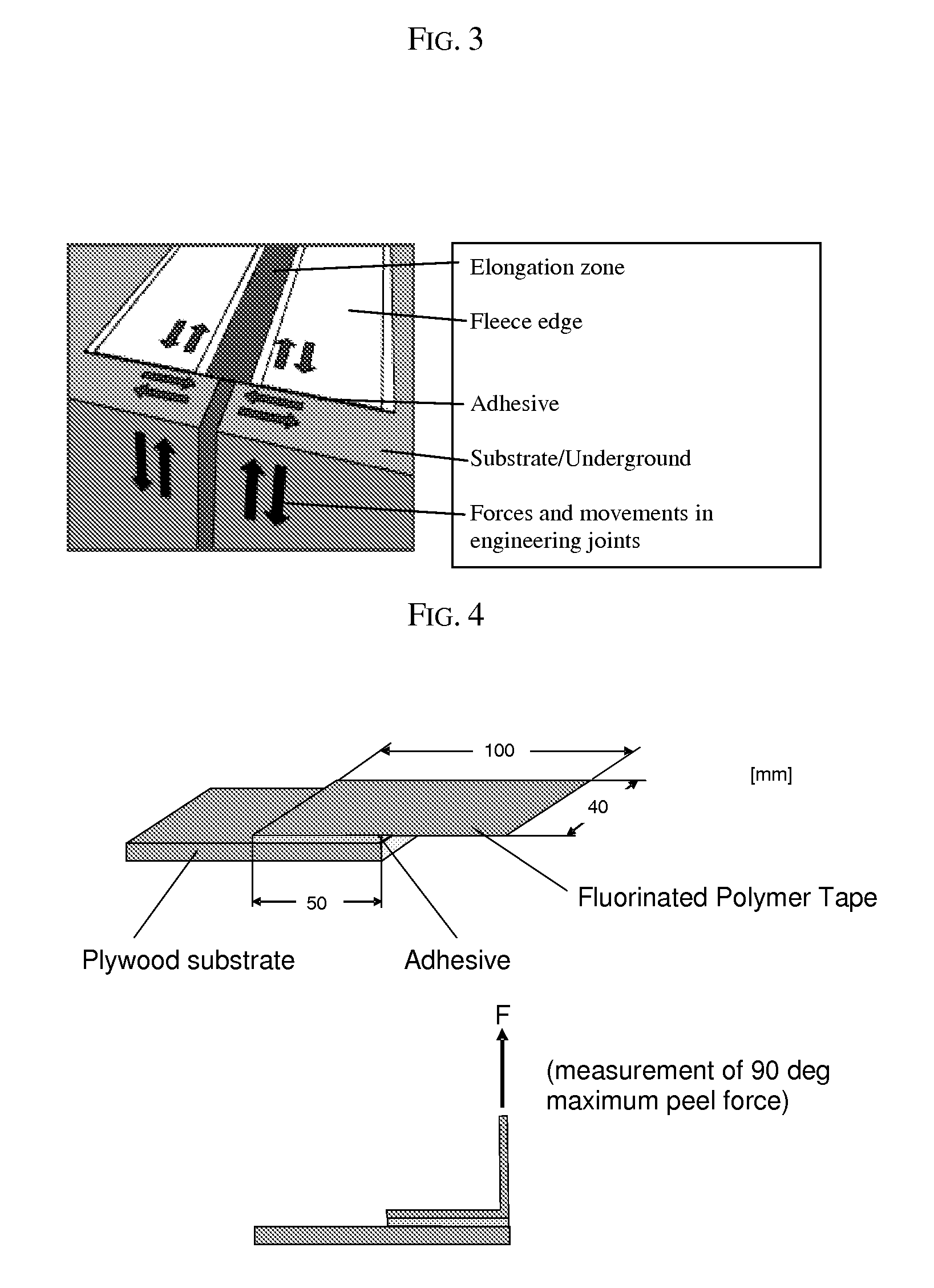Fluorinated polymer system
a polymer system and fluorinated polymer technology, applied in the field of fluorinated polymer system, can solve the problems of poor bonding properties of adhesives, high cost of polymer materials, and high cost of building or construction materials, and achieve the effects of less changeover and downtime, less raw materials, and less stocking and warehousing
- Summary
- Abstract
- Description
- Claims
- Application Information
AI Technical Summary
Benefits of technology
Problems solved by technology
Method used
Image
Examples
example 1
Adhesion Testing
[0114]The virgin and the fluorinated samples (Samples 1-3) of 200×300 mm each was cut out from the membrane sheets prepared earlier. These samples were adhered to plywood substrates with one-component water-based acrylic adhesives suitable to be used in building and construction applications.
[0115]The water based acrylic dispersion adhesive, Intercoll™ D-3218 from WAKOL (www.wakol.com), was used. This acrylic adhesive is low viscous and suitable to be used in fully adhered PVC roofing on soaking undergrounds.
[0116]The water based acrylic dispersion adhesive was first agitated to eliminate any phase separation due to storage. The water based acrylic dispersion adhesive was then applied on a plywood substrate with a brush to form a thin but coherent adhesive layer. The virgin and the fluorinated samples were then pressed into the adhesive layer using a pressing roll. Excessive adhesive was wiped away with kitchen paper.
[0117]The finished virgin and the fluorinated samp...
example 2
Adhesion Testing
[0120]The virgin and the fluorinated samples (Samples 1-3) of 200×300 mm each were cut out from the membrane sheets prepared earlier. These samples were adhered to plywood substrates with the one-component polyurethane (PUR) adhesives which is suitable for use in building and construction applications.
[0121]The one-component PUR adhesives, Dynol™ 1622 from PARAMELT are used. This PUR adhesive is high viscous liquid adhesive and is suitable to be used in roof refurbishment.
[0122]The one-component PUR adhesive was applied on the plywood substrate with a brush to form a layer of coating with a thickness of about 0.5 mm. The virgin and the fluorinated samples were then pressed into the PUR adhesive layer using a pressing roll. Excessive PUR adhesive was wiped away with kitchen paper.
[0123]The finished virgin and fluorinated samples were kept under pressure for 24 hours. After three days, the peel strength testing of the finished virgin and fluorinated samples was perform...
example 3
Adhesion Testing
[0125]The virgin and the fluorinated samples (Samples 1-3) of 200×300 mm each was cut out from the membrane sheets prepared earlier. These samples were adhered to plywood substrates with epoxy adhesives which are suitable to be used in building and construction applications.
[0126]The two-component-epoxy adhesive, Concresive™ 2200 from BASF, was used. This epoxy adhesive is suitable for use with MASTERFLEX™ 3000 sealants for engineering joints.
[0127]The epoxy adhesive components were intensively mixed with a spatula. Within 10 minutes, which was well below the allowable potting time of 2 hours, the virgin and fluorinated samples were pressed into the adhesive using a pressing roll. Excessive adhesive was removed from the edges with a spatula.
[0128]The finished virgin and the fluorinated samples were kept under pressure for 24 hours. After three days, the peel strength testing of the finished virgin and the fluorinated samples was performed in a tensile tester. The res...
PUM
| Property | Measurement | Unit |
|---|---|---|
| thickness | aaaaa | aaaaa |
| surface energy | aaaaa | aaaaa |
| thickness | aaaaa | aaaaa |
Abstract
Description
Claims
Application Information
 Login to View More
Login to View More - R&D
- Intellectual Property
- Life Sciences
- Materials
- Tech Scout
- Unparalleled Data Quality
- Higher Quality Content
- 60% Fewer Hallucinations
Browse by: Latest US Patents, China's latest patents, Technical Efficacy Thesaurus, Application Domain, Technology Topic, Popular Technical Reports.
© 2025 PatSnap. All rights reserved.Legal|Privacy policy|Modern Slavery Act Transparency Statement|Sitemap|About US| Contact US: help@patsnap.com



